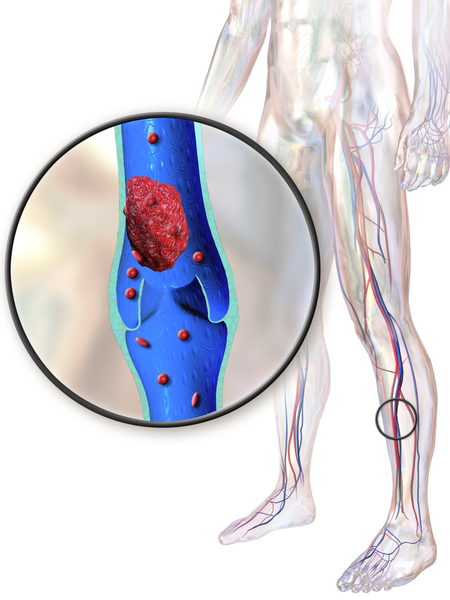Deep Vein Thrombosis
We can diagnose and treat this dangerous condition.
We can diagnose and treat this dangerous condition.
Deep vein thrombosis is the formation of a blood clot in a deep vein, most commonly the legs. Symptoms may include pain, swelling, redness, or warmth of the affected area, but there are not always symptoms associated with this potentially life-threatening condition. Complications may include pulmonary embolism, as a result of detachment of a clot which travels to the lungs, and post-thrombotic syndrome.
There are many risk factors that can lead to DVT, both acquired and inherited including but not limited to common conditions such as obesity, advanced age, certain cancers, inactivity, trauma, and pregnancy, along with certain vitamin deficiencies.
Individuals suspected of having DVT may be assessed using a clinical prediction rule such as the Wells score. A D-dimer test may also be used to assist with excluding the diagnosis or to signal a need for further testing.

Consider a screening to see if you are at risk.
Common signs and symptoms of DVT include pain or tenderness, swelling, warmth, redness or discoloration, and distention of surface veins, although about half of those with the condition have no symptoms. Signs and symptoms alone are not sufficiently sensitive or specific to make a diagnosis, but when considered in conjunction with known risk factors, can help determine the likelihood of DVT. In most suspected cases, DVT is ruled out after evaluation, usually using ultrasound, and symptoms are more often due to other causes. Pinellas Vascular will successfully diagnose the condition related to any symptoms being experienced.
The initial treatment of clots in the deep veins of the legs is anticoagulation (“thinning of the blood”). This substantially reduces the risk of clots traveling to the lungs, an event that can be fatal. If the clot is located in the iliac or femoral veins, it is important to clear the clot entirely. This is often accomplished with an endovascular procedure called thrombolysis. Catheters are used and placed in the clot and then using medication and in some cases a special clot breaking device, the clot is removed from your body. This helps prevent long term swelling and pain in the leg.
View ourbrief video regarding Deep Vein Thrombosis that we provide in conjunction with the Society for Vascular Surgery, of which Dr. Bunnell is a recommended specialist.
Pinellas Vascular is ready to assist you with your vascular condition or concern. Send us a message and we will get back with you quickly.